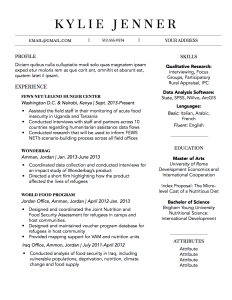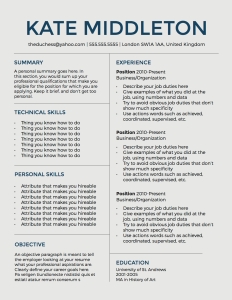Will a creatively designed resume help you get a job, or will it deter an employer from even considering you?

If you’ve been perusing Pinterest lately — especially if you follow me — you might have seen a few fancy and creative resume templates floating around.
It can be pretty tempting to acquire a creative resume. I am so guilty of that. I currently have five different resumes to choose from.
It’s a sickness.
But, it’s not always the best idea to indulge in a design-centered resume.
My resume remained in the state of a black and white Word document until my second year of college when I realized people actually put a lot of effort into resumes, and that mine was extremely underwhelming and unimpressive.
In the field I’ve chosen (communication), it is not uncommon to have a flashy, colorful and visually appealing resume. In fact, good luck standing out unless you have a resume that matches that description.
However, most fields don’t require that and even frown upon it.
In an article on Her Campus by Kelsey Mulvey, Alison Cheston, a career connector who teaches career workshops at NYU and Barnard College gave a brief list of fields in which a creative resume might not get you hired.
“Creative formats should never be used in banking and financial services, consulting firms, healthcare or government,” Cheston said. “If you send a creative resume to an inartistic company, the recipients may think you’re not serious about the position. Unless you’re sure that you’re interested in a creative field, sticking to a traditional format is better than being inappropriate.”
The last thing we want to be considered when seeking employment is silly or inappropriate. So be cautious.
Unless you’re heading into a creative career path, a simple black and white resume will be more than enough to at least get you an interview, and eventually, a job.
As seen at the beginning of this post, here is a black and white resume template I recently designed:
When a recent graduate who studied graphic design shows up to an interview, their resume will likely be considered a sample of their work. Infographics and other artistic elements can be well-received in art or design fields.
In an article in Forbes, Debbie Millman, President of Design at Sterling Brands said when it comes to resumes, content is king, and design can be a distraction.
“Substance over style is the rule for ALL resumes,” Millman said. “Any special effects will dilute the gravitas and stature of the impression. You want people to concentrate on your accomplishments and your successes, not the curlicues of a font or unusual shades or contrast of colors. … Don’t let design disrupt communication.”
Sounds scary, right?
It even makes me want to back off from designing anymore creative resumes.
But, don’t be too hesitant.
I will say right here and now that curlicues will never have a presence on a single resume The Top of the Pile produces.
I have see firsthand, employers at career fairs and internship fairs raise their eyebrows in pleasant surprise and say, “Nice resume,” when I hand them my creative resume.
Nobody likes an over-the-top, narcissistic piece of work, because that will immediately speak volumes about you to the employer, interviewer or even a peer.
However, simple, elegant and clean design elements are not going to turn any employer away.
Here is a creative resume template I recently designed:
Although it’s not your run-of-the-mill black and white resume, it’s still simple and easy to read, while also having a nice design to it.
Although creative templates are fun, we cannot forget that content truly is king.
Your achievements, experience and skills are far more important than any font or template you could ever purchase.


Thanks for the advice on creative resumes. I am currently working on updating mine and this was a big help.
LikeLike
No problem! Glad it was helpful!
LikeLike